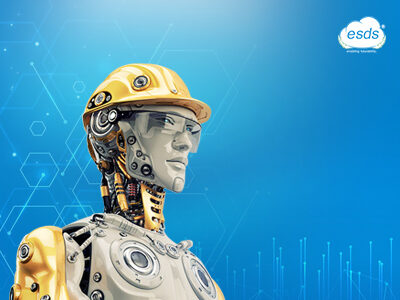How AI with Machine Learning is changing the Future of Construction
It has always been our goal to build technologies that mimic human intelligence. That’s why Machine Learning and AI are at the center of today’s industries, ready to turn their aspirations into realities. As a subset of artificial intelligence, machine learning relies on unique statistical algorithms that run on data without the need for explicit programming or human assistance.
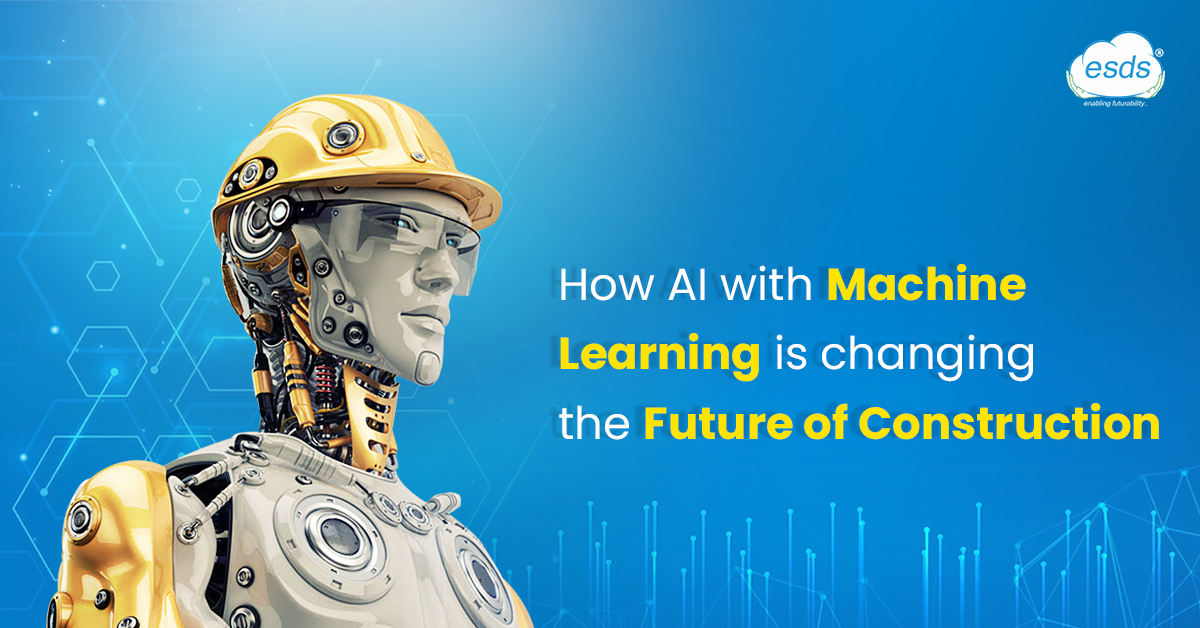
Intelligent behavior requires extensive information or knowledge, so machine learning is one implementation of artificial intelligence. AI in construction consists of two main areas – deep learning and machine learning. In spite of its nascent stage, the technology has applications in structural health monitoring, assessing building materials, safety on construction sites, and predicted energy demand. Deep learning is a subfield of machine learning that heavily relies on neural networks.
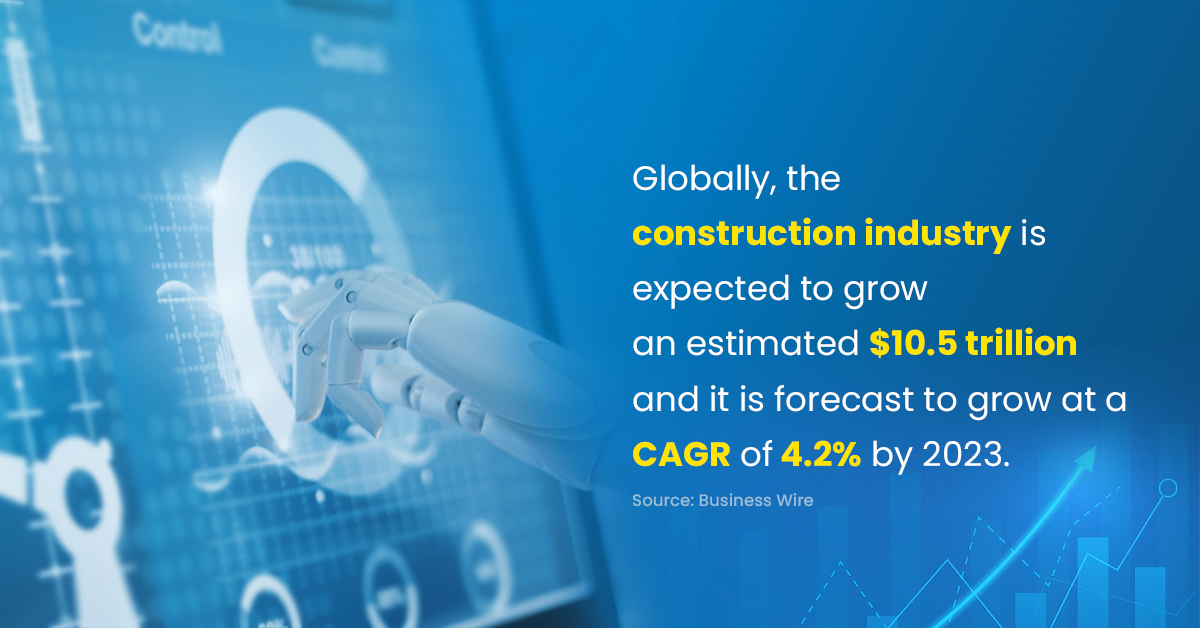
According to a report by Business Wire, the construction industry worldwide is expected to reach an estimated $10.5 trillion by 2023, and it is forecast to grow at a CAGR of 4.2% from 2018 to 2023. A major chunk of this vast sum of spending is enabled by rapidly-moving technological advancements that touch all areas of the ecosystem.
The Role of AI and Machine Learning for Smart Construction
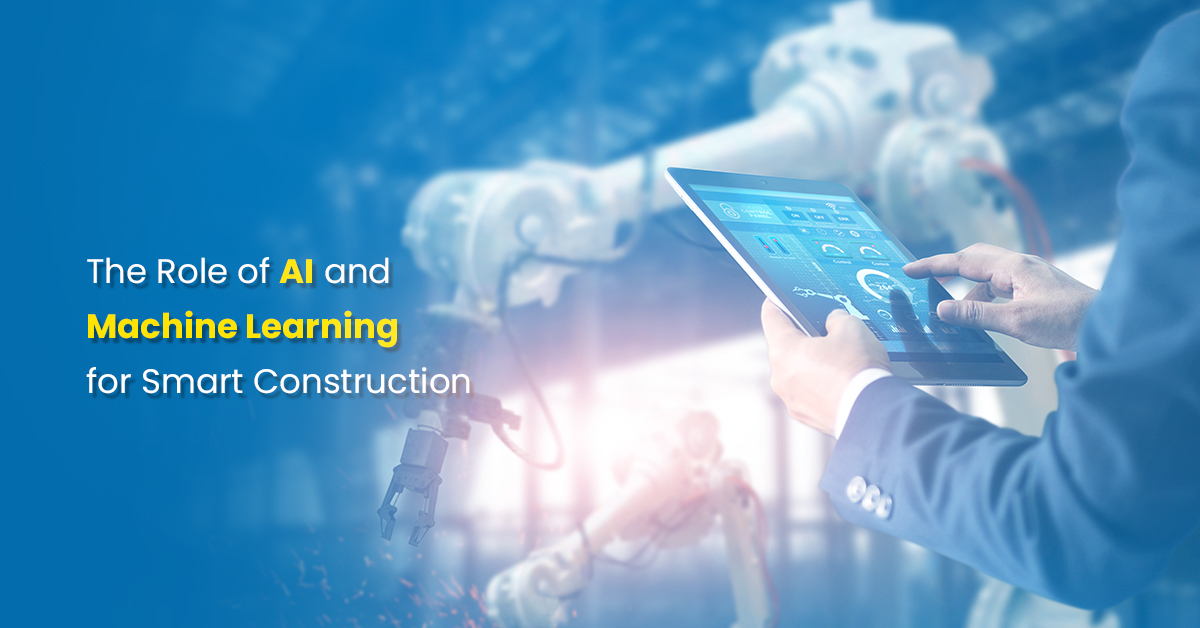
Machine Learning enables various machines to learn and predict results on their own. Machine Learning enables. Instead of having a person program them, they use algorithms and software to make predictions based on data. Without any manual examination, machines can notify you about preventive maintenance or updates.
AI in construction has the potential to help players realize value throughout project lifecycles, including Design, bidding, and financing; procurement and construction; operations and asset management; and, business model transformation. AI in construction helps the industry as a whole overcome some of our toughest challenges, including safety concerns, labor shortages, and cost and schedule overruns.
In construction, machine learning can help project engineers, supervisors, and everyone else involved in a project. ML can help monitor the work progress, assess the risks involved, notify the managers and supervisors of critical issues, improve the design and planning activities, and make informed predictions for a more streamlined workflow.
Applications of AI and Machine Learning in Construction
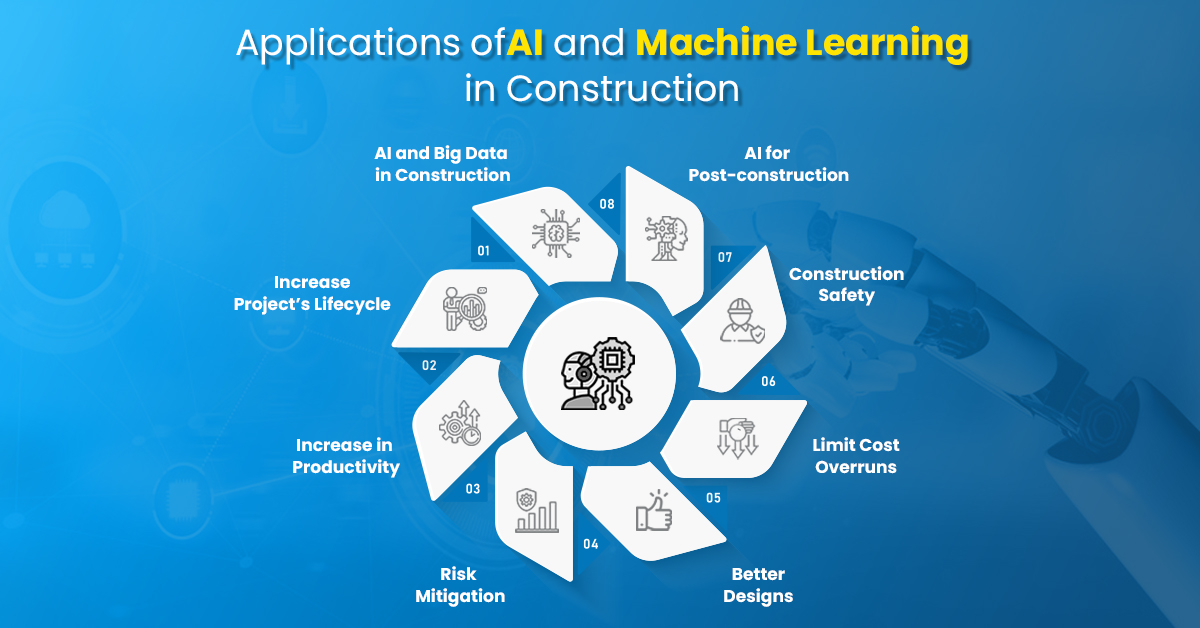
- Construction safety
It is very common in the construction industry for workers to get drastically injured or have life-threatening accidents on the job, as compared to laborers from any other industry. The implementation of ML at sites can upgrade the level of safety. It can be used to assess, identify, and promptly report any glitch perceived. ML can be used in visual and audio data emerging from a construction site for recognizing safety threats and carrying safety updates to eradicate elevated hazards. The adoption of ML on construction sites can take the level of safety to new heights. It can be used to identify, assess, and instantly report any anomaly detected.
- Limit Cost Overruns
Construction projects, undoubtedly, have big budgets and are high on expenses. Most of the time, such projects go over budget despite predicting all kinds of expenses. In such cases, Artificial Neural Networks work on projects to forecast cost overruns. The factors taken into consideration are contract type, project size, and the competency of project managers. AI helps the workforce access real-life training material remotely, which enables them to enhance their skills and knowledge swiftly.
- Better Designs
Machine learning can advance designs to make spaces superior for their eventual end-users. Likewise, machine learning can help workers identify errors and blunders in the design before going forward with building. Instead, you can leave that to machine learning which ultimately saves teams critical times that can be used for more productive tasks. With machine learning, you can even test various environmental conditions and situations in the model. The technology can help to determine if a particular element of the design is optimal, or can predict if it could create an issue down the road.
- Increase in Productivity
Construction projects are more productive when ML software is used. Using the software solutions, users can monitor and supervise daily operations on sites such as concrete pouring, bricklaying, electrification, flooring, plumbing works, and roofing. Additionally, project managers can track job site work in real-time. To assess worker productivity and compliance with procedures, they use facial recognition, onsite cameras, and similar technologies.
- Risk Mitigation
Construction projects are not without risk in many forms, such as safety, time, quality, and cost risks. Larger projects entail more risk since different subcontractors work simultaneously on different trades. Contractors today use AI and Machine Learning solutions to monitor risk on the job site so that the project team can focus their time and resources on other crucial factors. AI can be used to routinely assign priority to concerns. Risk scores are assigned to subcontractors so that construction managers can work closely with high-risk teams to mitigate risk.
- Increase Project’s Lifecycle
Besides construction and design, machine learning may even prove useful in facility management to extend an asset’s overall lifecycle. Facilities management generally lacks important information. Therefore, it is difficult to manage on-site repairs and renovations efficiently and cost-effectively. Through the collection and utilization of information and data, machine learning can assist in streamlining the process. Documents and data, like work orders, can be classified and relevant conditions analyzed in real-time, with surprising accuracy. By doing so, the administrative burden is taken off of people, who can focus on the real problem at hand.
- AI and Big Data in Construction and Post-construction
AI systems now have access to an endless amount of data for learning from and improving on every single day in an age when an endless amount of data is being created every day. AI becomes a data source from every single job site. A vast body of information has been collected from images and videos captured using mobile devices, drones, security sensors, and building information modeling (BIM). Artificial intelligence (AI) and machine learning provide construction industry professionals and customers with the opportunity to analyze data and gain insights from using the data.
The use of sensors, drones, and other wireless technologies to collect information about buildings, bridges, roads, and everything in the built environment helps advanced analytics and AI-powered algorithms gain valuable insight. By this logic, AI can monitor arising problems, determine when preventative maintenance is needed, and even guide human behavior to achieve the best security and safety results.
- Data Center Services and Its Different Types - May 31, 2022
- How AI with Machine Learning is changing the Future of Construction - March 15, 2022
- Blockchain Technology:What is Blockchain? Benefits of Blockchain and what the future holds - February 8, 2022
